GeForce 2 GTS
NVIDIA's latest graphics card previewed
Since the release of the Riva TNT2, NVIDIA have been on top of the graphics card industry - their GeForce graphics cards are currently the fastest on the market, as well as having the most advanced features of any consumer graphics card.
With new cards due out soon from ATI and 3dfx, NVIDIA have now launched their own next generation card, the GeForce 2 GTS (short for GigaTexel Shader, in case you were wondering). We dropped by the London press launch to get a closer look...
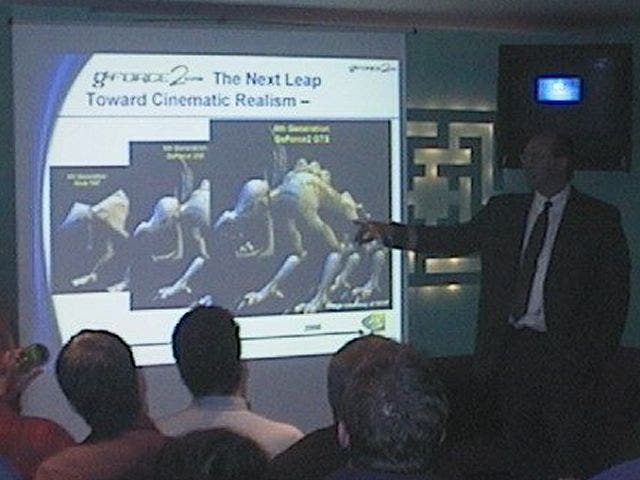
Brute Force
The GeForce 2 GTS sees NVIDIA's production move from a 0.22 micron to a 0.18 micron process. In English, this means they can pack more transistors into the same space on their chips, and so build more complex processors that use less power and produce less heat.
This in turn allows an increase in clock speed, and therefore performance. The GeForce 2 GTS runs at 200MHz, and produces 800 MegaPixels per second, compared to the 480 MP/s of the original GeForce. It can also push out an awe inspiring 1.6 GigaTexels per second, compared to the 480 MegaTexels per second of the original GeForce.
The triangle throughput of the transform and lighting hardware has also been given a boost, rising from a "mere" 15 million triangles per second to a staggering 30 million. Which strangely enough is the same figure that ATI are claiming for their next generation Radeon card - coincidence?
NVIDIA are claiming that the card is twice as fast as the GeForce overall, although these are rather theoretical numbers. In reality the speed of GeForce cards is largely limited by the memory bandwidth available at the moment, although the GeForce 2 GTS sports the latest 333MHz Double Data Rate (DDR) memory to provide the best performance possible.

Shady Character
The GeForce 2 doesn't just offer an increase in brute power though, it also adds some new features of its own. Most important is the NVIDIA Shading Rasterizer (NSR), which allows per-pixel effects to be added to game graphics.
According to NVIDIA, this allows games to do a single pass to produce seven seperate operations - base textures, bump mapping, diffuse lighting, specular lighting, coloured fog, ambient lighting and alpha transparency effects - all with a negligible performance hit as more effects are added.
id Software's John Carmack is quoted in NVIDIA's press release as saying that "per-pixel shading, utilising cube environment mapping and normalised dot product bump maps, looks incredibly good across an entire world. Everyone at id is way psyched about developing new content with the GeForce 2 GTS". I think he liked it...
Certainly the effect in Computer Artworks' "Evolva" was impressive. The frame rate hit from adding the per pixel effects wasn't noticeable, while the improvement in visual quality certainly was.
A new demo from The Whole Experience was also shown, with per pixel effects adding an impressive amount of detail to the scenes with no obvious frame rate hit. Hieroglyphs and markings on the walls appeared as the new effects were added, as well as reflective and tarnished metallic surfaces, and light sources and weapons effects cast realistic light and shadows on all these surfaces as they passed through the level.
Best of all, NVIDIA have created tools that produce these effects from the source art without requiring extra work from the artists. Evolva will be released next month without support for the GeForce 2 GTS, but a patch will add the new effects soon after the game's release.
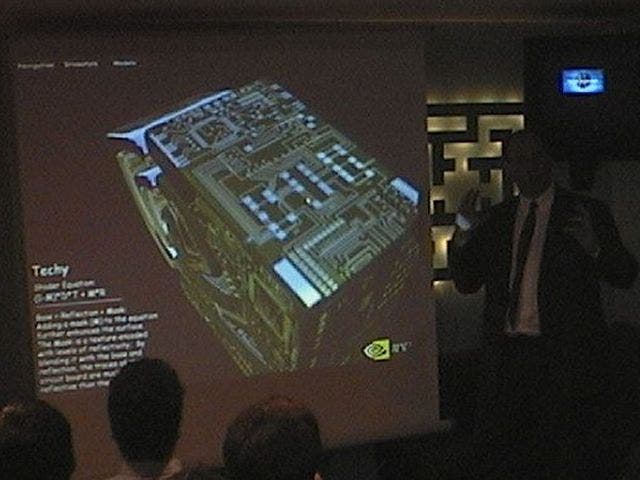
Demos
One of NVIDIA's own in-house demos showed an ultra-high polygon rendering of the NVIDIA logo spinning on the screen, all generated in real time by their graphics card.
At first they gave the logo a shiny silver surface that simply reflected a standard environment map, then they made that surface tarnished, so that it looked more like a real metal surface. Next they replaced part of the surface with a high resolution texture showing a circuit board, then made that texture fully reflective, and finally added a per-pixel effect so that the silvered components on the circuit board were reflecting the environment map, while the green board material itself was not. The end result was very impressive...
There was also a new version of the now famous tree demo, which was used to show off transform and lighting effects on the original GeForce card. Back in September NVIDIA showed a single tree with individual leaves and twigs, lit by a handful of light sources. Today they showed an entire grove of trees lit by around fifty fireflies flitting around amongst them!
Although the GeForce is still limited to accelerating eight lights in hardware, NVIDIA are keen to point out that this is in fact eight light sources per polygon, meaning that you can have literally dozens of light sources in a single scene, as long as you only calculate the effects of any eight of them on each polygon in your world.
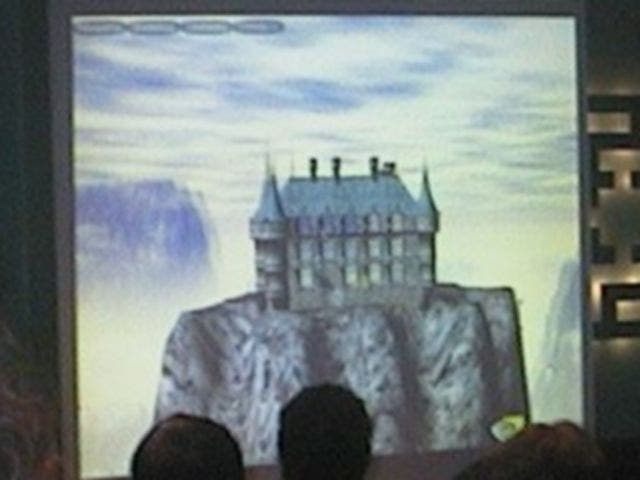
Area 15?
Next up was the snow storm demo, which showed a 160,000 polygon castle inside a glass ball, with "snow" falling inside it when the demonstrator "shook" the ball.
From a distance it looked like just another example of environment mapping, with the sphere reflecting and refracting the background image. But as we zoomed in on the crystal ball the baroque castle inside it became visible - intricately detailed with reflective windows, and a full compliment of spires and towers.
NVIDIA then showed off their new per pixel lighting effects by moving the "sun" around to change the lighting on the scene, and then switching to a hellish red sky and triggering a lightning storm, which flashed light on to the castle as you would expect.
Another of NVIDIA's demos was the "Area 15 NVIDIA Bunker", a Quake 3 Arena map created from scratch to take full advantage of transform and lighting acceleration by pushing the level of detail far beyond that seen in the original game.
The sheer attention to detail was incredible, with bolts holding objects to the walls, smoothly curved corridors, detailed staircases and bannister rails, and even an NVIDIA chip fabrication plant in one room churning out little NVIDIA GPUs on a conveyor belt!
This map is now available from NVIDIA's website if you want to see whether your own system can take the strain...
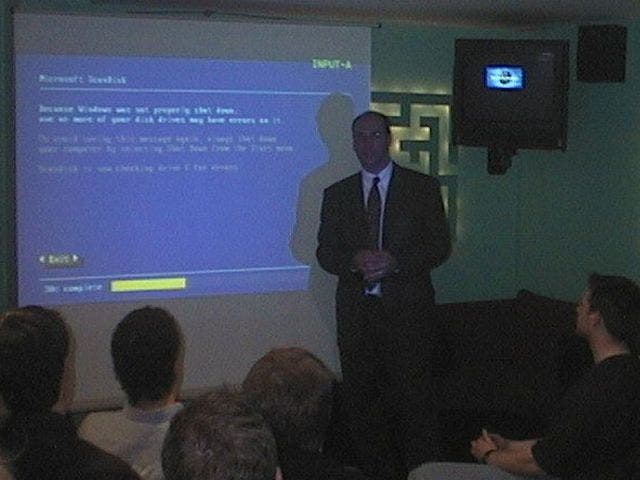
Buzz
Of course, the GeForce 2 GTS also supports all the industry standard buzz-words. DXTC and S3TC texture compression are included as standard, and the card also supports all 18 standard HDTV output formats, right up to 1920x1280 resolution. Which compares well to ATI's newly announced Radeon card.
Good news also for all of you out there using Linux, as the GeForce 2 GTS will come with what NVIDIA are claiming is the first fully hardware accelerated OpenGL v1.2 compliant driver. As NVIDIA told us, "This will be the fastest card for Linux you've ever seen".
It should also be the fastest PCI card you've ever seen, as NVIDIA have learned from 3dfx's domination of the low end market by adding PCI support to the GeForce 2 GTS. Whether anybody will actually make PCI versions of their cards is uncertain at this point, but the option is there.
The GeForce 2 GTS also supports full-scene anti-aliasing in hardware, which is 3dfx's big feature for their new line of Voodoo graphics cards. NVIDIA didn't make much of this in their demonstration though, and judging from their recent driver releases their implementation of anti-aliasing may not look quite as good as 3dfx's.
And using full-scene anti-aliasing will come with a heavy performance price for both 3dfx and NVIDIA cards, making it good for flight sim fanatics, but not so good for first person shooters, where fill rate is everything.
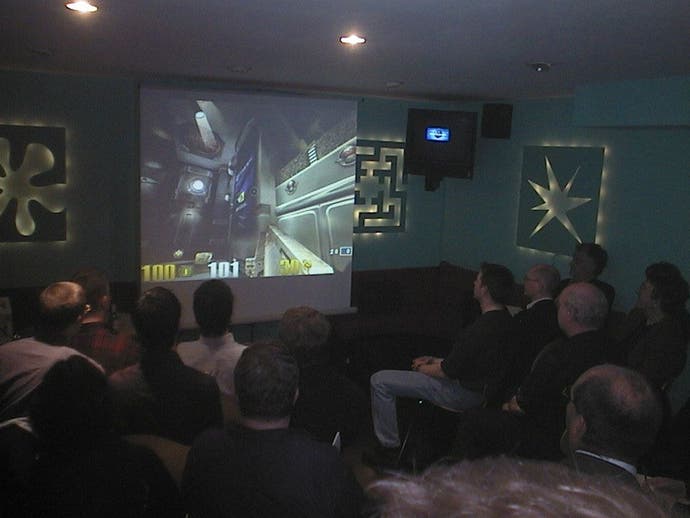
Numbers
Of course, what you really want to see are benchmarks. Unfortunately we don't have a GeForce 2 GTS card of our own to test yet, but we did manage to run some Quake 3 benchmarks on one of the systems NVIDIA had rigged up to demonstrate the cards at their press launch.
The test system was rather high spec - a Pentium III 1GHz with 128Mb RAM, running Windows '98. We ran Quake 3 through several "time demo" tests using demo001, with standard settings and no tweaking. These were the main results that we got back -
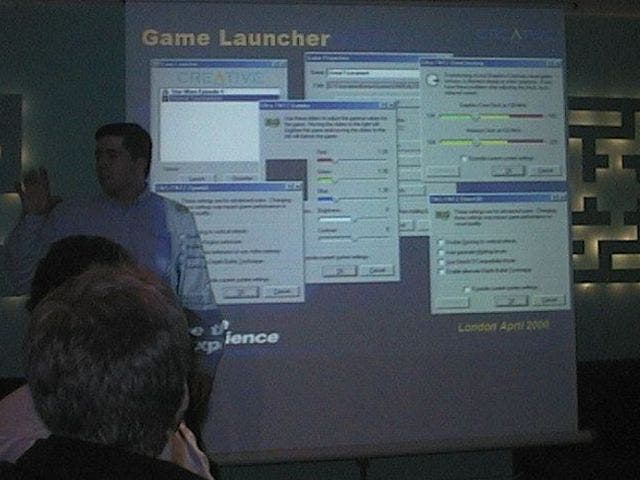
Detail Setting Resolution Frame Rate Normal 800x600 120.8 High Quality 1024x768 80.5 High Quality 1280x1024 48.6
NVIDIA put up a slide of benchmarks using WinBench 2000 that showed the card was about twice as fast as the original GeForce, as well as Quake 3 benchmarks which showed a similar speed increase.
However, their Quake 3 tests had been run on the special NV15 Bunker map, not on standard Quake 3 time demos, and so part of this frame rate increase was undoubtedly due to the big improvements in their transform and lighting support, which wouldn't effect many of last year's relatively low detail games.
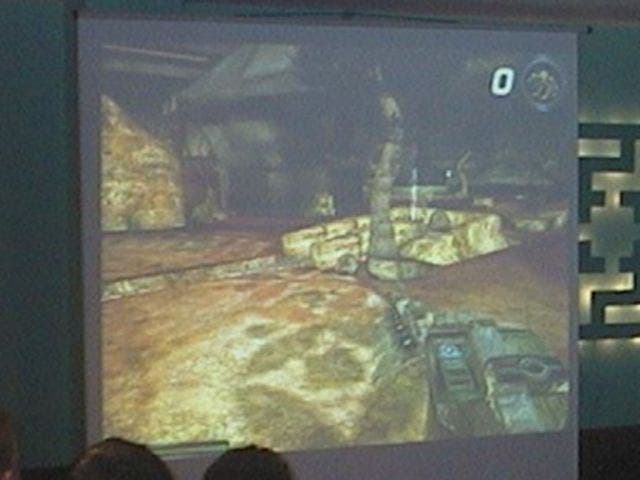
Creative
Creative Labs gave their own presentation at NVIDIA's press launch, announcing that their GeForce 2 GTS based cards will be available mid-May for $349.99. With a little jiggery-pokery, that means that the UK release price should be between £229.99 and £249.99, depending on exchange rates, sales estimates, and the way the wind is blowing. Probably.
For your money you will get a basic GeForce 2 GTS with 32Mb of 333MHz DDR memory, with a full copy of Rage Rally and a demo of Offroad Racer likely to be included in the games bundle. For those of you wanting TV output, a daughter board providing this will be available through Creative's website more or less at-cost.
The now traditional Colorific and 3Deep utilities will be included, and of course Creative's "Unified" driver set, which supports 3dfx's Glide API as well as Direct3D and OpenGL. The "Display Director" utility will also be introduced with the new card, replacing the old NVClock and AGPWizard tools. This allows you to tinker under the bonnet, adjusting all the main options such as core and memory clock speed and AGP settings.
Another handy utility is Game Launcher, which allows you to adjust your graphics card setup on a per game basis. The seperate setups for each of your games can include different gamma settings, clock rates, Direct3D and OpenGL options, and the proverbial much more.
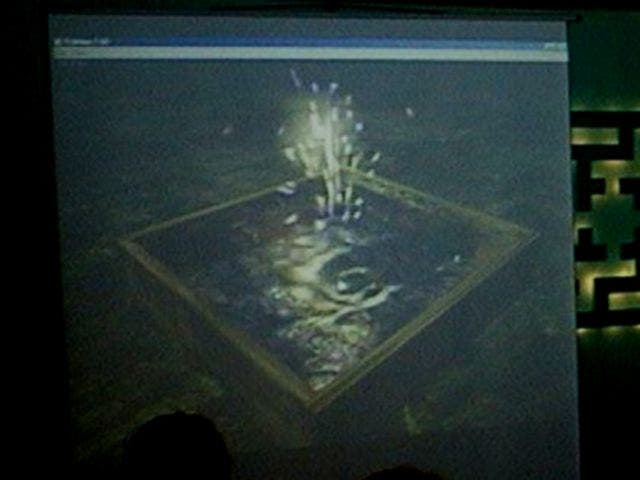
The Obligatory NVIDIA vs 3dfx Section
It looks like the GeForce 2 GTS should offer a significant speed increase over the GeForce, although for current games this will probably be nowhere near the levels NVIDIA are claiming.
Either way, this should still put it at least on a par with 3dfx's flagship product, the Voodoo 5 5500 AGP, also due out next month and also expected to cost around $300, but still lacking in hardware T&L support. And as more titles appear with support for T&L and the new per pixel effects, the more future proof GeForce 2 GTS should really shine.
Meanwhile the 3dfx Voodoo 5 6000 with its geek friendly external power supply is still nowhere in sight, and if / when it finally does appear it is expected to cost significantly more than the GeForce 2 GTS, pricing it out of the market for all but the most hardcore users. So for all 3dfx's hype, it looks like the GeForce 2 GTS could be the first GigaTexel graphics card to be released.
Conclusion
With the first GeForce 2 GTS cards due to ship in quantity from the middle of May, NVIDIA are once again on top of their game.
NVIDIA have hit the ground running, and the GeForce 2 GTS seems to offer a noticeable performance increase over the original GeForce cards, as well as adding new features in the form of per pixel effects, HDTV output, and full scene anti-aliasing.
Cards based on the GeForce 2 GTS will be available soon from Creative Labs, Hercules (aka Guillemot), Elsa, Leadtek and Asus amongst others, and high profile companies such as Dell, Compaq and Gateway will be including GeForce 2 GTS based graphics cards in their machines.
Hopefully we should have review boards from Creative and Guillemot soon, so watch this space for full reviews of the first GeForce 2 GTS graphics cards in the next month! In the meantime, we have posted an "eye candy" page at the end of this preview, with half a dozen shots of some of the tech demos in action.
-
Creative Labs Annihilator Pro review

